Introduction:
Standing out and grabbing attention in a world overflowing with digital content is a challenge. It’s not enough to just have great content; it has to connect, resonate, and inspire. The psychology of content comes into play here.Â
The study of content psychology focuses on how audiences engage with online content based on motivations, emotions, and cognitive biases. Brands aiming to resonate deeply with their audience must take advantage of these psychological insights.
You’ll learn how brands can create content that not only grabs attention, but also fosters loyalty and boosts conversions based on psychological triggers and strategies. These principles will help brands build engaging, audience-centered experiences that will drive engagement and impact rather than just creating content.
Content Engagement and Cognitive Biases
Getting to Know Cognitive Biases

The Psychology Behind Content That Engages Audiences
Cognitive biases are mental shortcuts that help us make quick decisions. Digital marketers use these biases to influence how content is perceived, remembered, and acted upon. From anchoring and authority to reciprocity, cognitive biases help marketers create content that nudges audiences.
Biases in Content Marketing
We trust experts and authoritative figures because we’re biased. It’s more credible and persuasive when content is presented by an authority or endorsed by an influencer. An audience’s trust and engagement can be driven by a source’s credibility in content marketing.
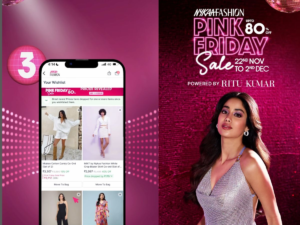
The Psychology Behind Content That Engages Audiences
The principle of reciprocity says people should return favors and kindnesses. Freebies, exclusive insights, and valuable content without upfront costs are often more likely to engage audiences.
The anchoring bias is when people judge based on the first piece of information they receive. Anchoring plays a big role in content marketing, since headlines, data, and examples influence how audiences interpret the rest.
Content Strategy and Bias
Content strategy can be improved with a deeper understanding of cognitive biases. A brand can craft content that resonates by emphasizing authoritative sources, providing value upfront, or carefully framing initial information. For example, HubSpot and Moz use expert contributors or free resources to build trust and engagement in their campaigns.
Content creation and emotion
Content with an Emotional Charge
No matter how we think about it, emotions play a big role in motivating us and influencing our decisions. Shared content that evokes strong emotions like joy, sadness, fear, or surprise tends to have higher engagement rates.

The Psychology Behind Content That Engages Audiences
Studies show that positive emotions, like happiness or inspiration, encourage sharing, since people want to share stuff that makes them feel good. Fear and anger, on the other hand, can create urgency and provoke reactions, making them useful for marketing.
The Art of Storytelling
Using stories to evoke emotions is a time-tested technique backed by psychological principles. Having a story connects audiences on a personal level, enhancing empathy and relatability.
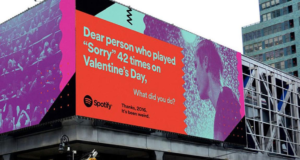
The Psychology Behind Content That Engages Audiences
By putting the audience at the center of the experience, you can make content memorable and impactful. You can get your audience involved and emotional by using techniques like introducing conflict, creating empathy, or using suspense.
Evoking Emotions with Visuals and Words
Visuals, colors, and language have a huge psychological impact on how people perceive content. Warm colors like red and yellow can evoke excitement and urgency, while cool colors like blue and green can inspire calm and confidence.Â

The Psychology Behind Content That Engages Audiences
Using imagery that reflects your target audience’s values or experiences makes the content more relevant, while words can subtly guide your audience’s emotions.
Emotional Content Examples
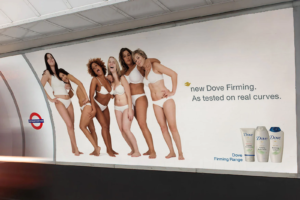
The Psychology Behind Content That Engages Audiences
Brands like Dove’s “Real Beauty” campaign and Coca-Cola’s “Share a Coke” campaign show how emotional storytelling works. Dove’s focus on self-love and authenticity resonated deeply with audiences, leading to widespread engagement.
oThe Psychology Behind Content That Engages Audiences In Coca-Cola’s personalization strategy, audiences were prompted to share their experiences online and connect emotionally with the brand.
Relevance and Personalization
The Power of Personalization
Personalized communications satisfy a fundamental psychological need: the need to feel seen and valued. People feel genuinely understood when brands personalize content based on their preferences or past behavior.
Personalization Techniques
Brands can deliver tailored content based on user data like browsing history, demographics, and purchase history.
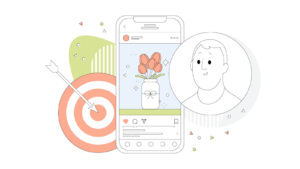
The Psychology Behind Content That Engages Audiences
Content that changes dynamically based on viewer behavior or preferences, creating a unique experience every time they engage with a brand.
Targeting based on behavioral patterns: Brands can send specific messages or suggestions based on behavior patterns. Users get abandoned cart emails when they consider something but don’t buy it, which nudges them to convert.
Context and Timing
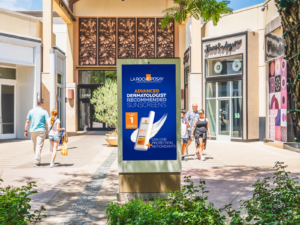
The Psychology Behind Content That Engages Audiences
Delivering the right content at the right time is also part of personalization. It’s more likely that people will interact with content delivered during peak engagement times, like social media posts or email newsletters.
Marketing Examples That Work
Netflix’s recommendation engine and Spotify’s Discover Weekly playlists are good examples. Providing tailored content makes these brands stand out, fostering loyalty and engagement. This personalized approach also helps to increase customer loyalty and engagement. It also allows companies to better understand their customer base and develop targeted campaigns.
Content to Build Trust and Authority

The Psychology Behind Content That Engages Audiences
In Digital marketing, Trust is Key
Building long-term relationships with audiences is all about trust. Audiences who trust a brand are more likely to engage consistently, buy stuff, and recommend it to others. Trust is built and maintained by being transparent, authentic, and consistent.
Quality Content Builds Credibility
Building credibility requires content that offers real value, like well-researched articles, expert interviews, and in-depth guides. Brands establish themselves as reliable sources of information by offering quality info.
It’s all about Social Proof
Credibility can be enhanced by social proof, like customer testimonials, case studies, and user-generated content. Since people tend to trust opinions and actions of others, showing that other customers have had positive experiences with the brand encourages new users to get involved.
Brands with Authority-Building Content
HubSpot and LinkedIn are exemplary in their authority-building content strategies. HubSpot’s research-backed blog posts and LinkedIn’s in-depth industry reports establish them as leaders in their fields, fostering trust and loyalty.Â
Both companies also leverage their content to create meaningful connections with their target audiences. They use content to educate, inspire, and motivate readers to take action. This builds a strong brand and leads to more conversions.
Fear of Missing Out (FOMO) and Scarcity
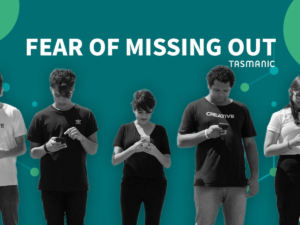
The Psychology Behind Content That Engages Audiences
Fear of Missing Out and Scarcity as Psychological Triggers
Scarcity and FOMO are psychological triggers that make us want to avoid loss and seek exclusivity. You’ll make quick decisions and engage more quickly when these triggers create a sense of urgency.
How to Create FOMO
Inducing FOMO with limited-time offers, exclusive content, and countdowns is popular. By using these tactics, you create a sense of urgency, forcing people to act fast.
Content Strategy Based on Scarcity
The concept of scarcity can be applied to content marketing by highlighting limited quantities or exclusive access. A message like “only a few spots left” or “limited-time access” can motivate people to engage sooner rather than later.
Case Studies on FOMO Marketing
Booking.com and Amazon use FOMO and scarcity tactics well by showing countdowns and availability alerts. Customer’s are reminded of limited stock or time constraints by these subtle cues, which leads to faster purchases.
Engage Your Audience with Interactive and Visual Content
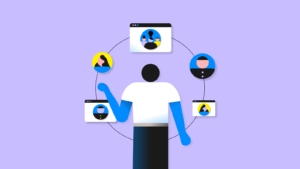
The Psychology Behind Content That Engages Audiences
Content Types with Interactive Elements
Engaging audiences through interactive content, like quizzes, polls, and surveys, encourages them to participate instead of passively consume it. Content types like these satisfy a desire for active engagement, so they’re great for engagement and retention.
Engaging Visuals
There’s a lot of influence on attention and engagement from visual design elements like colors and typography. Consistent branding across visuals helps audiences recognize and remember content, while bright, contrasting colors can highlight important information.
High-Engagement Visuals
Audiences connect with visually appealing imagery and interactive features from brands like Nike and Airbnb. Nike’s campaigns use bold colors and active scenes that match the brand ethos, while Airbnb’s immersive visuals make viewers feel like they’re part of the experience. These visuals help to create an emotional connection with the audience, making them more likely to purchase the product or book the service. Visuals can also be used to create a sense of urgency and motivate customers to take action.
Maintaining loyalty Through Consistency and Predictability

The Psychology Behind Content That Engages Audiences
Consistency is Important Psychologically
The “mere-exposure effect” happens when people develop preferences for things they see all the time. The more consistent the content schedule and style, the more familiar and loyal the audience becomes.
Loyalty Rhythms for Content
You can build anticipation among audiences by posting weekly updates, hosting monthly webinars, or launching regular content series. The more audiences know when to expect content, the more likely they are to come back.
Values and Voice of The Brand
It’s important for brands to have a consistent brand voice so they can connect with their audience emotionally. Maintaining a unified tone and style helps brands build trust and loyalty by making audiences feel familiar.
Content Examples of Consistency
Consistency builds strong relationships with audiences for brands like the New York Times and Apple. The New York Times’ unwavering editorial tone and Apple’s minimalistic, high-quality design reinforce their brand identities. These consistent elements make it easier for audiences to recognize and remember the brand. This, in turn, helps to build brand loyalty and increase sales.
Engaging Your Community with Social Proof
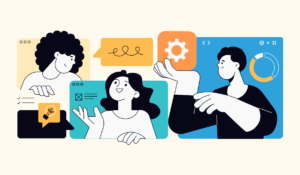
The Psychology Behind Content That Engages Audiences
Content Psychology and Community
Community provides a sense of belonging, which is essential for mental health. By building communities around their content, brands create an environment in which audiences feel valued and connected, which leads to increased loyalty.
Testimonials From Users
User-generated content (UGC), like customer photos, reviews, or stories, is a powerful social proof. A brand’s credibility and engagement increases when audiences see others interacting positively with it.
Using Influencers as Social Proof
Influencers lend more credibility to content, since people who respect and admire them are more likely to trust them. The influencer is a trusted source that bridges the gap between brands and audiences.
Examples of Good Community Engagement
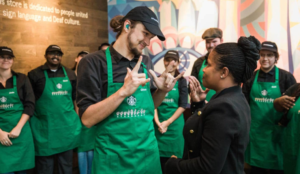
The Psychology Behind Content That Engages Audiences
There’s a lot of community building going on around Glossier and Starbucks. With Glossier’s social media presence and customer-centered content, you get a sense of community, while Starbucks’ seasonal campaigns encourage customers to share their own experiences. Glossier and Starbucks both create a sense of belonging among their customers, making them more likely to stay loyal to the brand. This sense of community can be a powerful tool for gaining customer loyalty and generating positive word-of-mouth.
Conclusion:Â
We’re seeing new trends in psychological content creation as digital marketing evolves. Brands can deliver more tailored and engaging content with innovations like AI-driven personalization and augmented reality.
Brands aiming to connect meaningfully with audiences need to integrate psychology into their content strategy. It’s important for marketers to understand and apply these psychological principles to create content that resonates, builds trust, and engages long-term.
This article explores content psychology and provides actionable insights for marketers. You’ve got to use these psychological principles to create content that captures attention, fosters loyalty, and drives long-term success, from cognitive biases to emotional engagement and community-building tactics.


